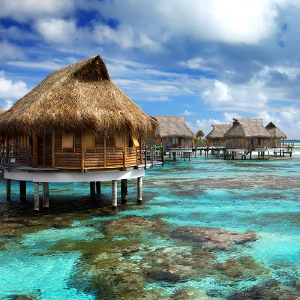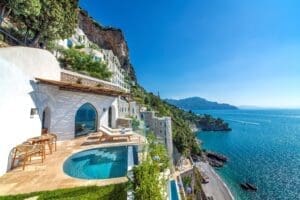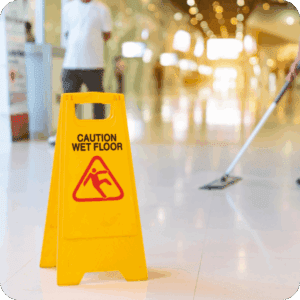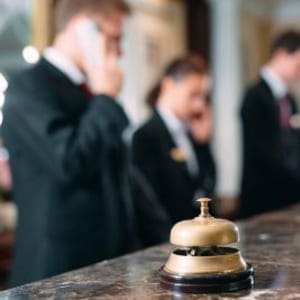 The GM dropped in on the Front Office meeting and congratulated everyone on the FO team for handling four ‘perfect sell’ days last week. Four in the past five days…he brought cupcakes! The GM and many in revenue management believe that if all the rooms in their property or portfolio are occupied 100% percent of the time, then they will achieve maximum financial performance.
The GM dropped in on the Front Office meeting and congratulated everyone on the FO team for handling four ‘perfect sell’ days last week. Four in the past five days…he brought cupcakes! The GM and many in revenue management believe that if all the rooms in their property or portfolio are occupied 100% percent of the time, then they will achieve maximum financial performance.
In our experience this is actually a short-sighted strategy for several reasons. Let’s look at the three biggest myths of the ‘Perfect Sell’.
Myth 1: A perfect sell means more money
In some cases, total potential revenue and actual ADR can drop on perfect sell days in the final analysis. Why?
First, Sales may have acted very aggressively, dropping rates to acquire room nights to secure 100% occupancy. This is especially true if there are sales incentives tied to 100% occupancy as we have seen in many different markets.
Second, because the hotel is sold out (and likely overbooked in order to achieve sold-out status), there are inevitably too many reservations for the lowest category room. As a result, the front office ends up having to give away suites for free because they have to put heads in beads. Giving away suites to overbooking reduces their value and ADR.
Third, any ‘moment-of-arrival’ upgrade program at check-in gets minimized due to lack of availability, and in some brands this is worth hundreds of thousands of dollars per room per year. The math is pretty straight forward – if your most common or desirable room category upgrade is $100 more a night, and your average length of stay is 3 nights, that one upgrade is worth $300. If your front office did one upgrade a day for a month, it would be worth $9,000; multiply by 12 and you have $108,000 in incremental revenue from one upgrade a day.
Reality: If you are running 100%, your rates are likely too low. Increase them a few percent and if occupancy drops a few percent, you make the same money with less stress, better service quality, and reduced depreciation of the property.
Myth 2: It’s good for the property
At 100% occupancy, your staff and support departments are stretched thin, stress levels increase, and employee morale can take a hit. More specifically, any or all of the following examples can be happening simultaneously:
- At key times during the day, the check-in line can wrap around the lobby. During these frantic few hours, front desk agents have to juggle checking guests in quickly versus with personalized quality.
- The wait at the restaurant is too long, in-room dining is backed up, and guests go across the street to eat.
- Housekeeping is compromised and over-worked, as there is increased pressure to speed up the turn-around times to ready a room for a new guest that has been waiting in the lobby for the last hour.
- Engineering tickets start backing up. Moreover, wear and tear on the rooms is unrelenting and Engineering cannot get to preventive maintenance items as they are simply trying to get through one leaky A/C unit at a time.
Reality: Running at 100% occupancy – versus 90-95%- has some serious hidden costs including lost upgrade revenue, disgruntled guests, marginal service, occasional maintenance break-downs, and likely overtime costs. Additionally, staff trying to maintain a work-life balance are calling in sick or taking personal time because of the extra stress.
Myth 3. Perfect sells have a neutral-to-positive impact on guest satisfaction
Sustained periods of maximum or over-capacity can actually lead to customer dissatisfaction. Why? First, service excellence gets compromised as a result of the increased and continuous demands.
Second, walking guests to other hotels is all but inevitable, and that’s more dissatisfaction. When was the last time your staff was given “How to Walk a Guest Perfectly” training?
Third, remember the extra stress on housekeeping and engineering, or the extra-long line in the lobby at peak check-in times? At some point, for example, Housekeeping will “miss a spot” in their rush to turn rooms over and now someone has to deal with addressing the negative posts on Trip Advisor.
Reality: Running at 100% occupancy and being oversold as a result will end up inconveniencing some percentage of guests one way or another. This can directly result in guest complaints and inevitable posts on social media.
Conclusion
So is a “perfect sell” really “perfect”? No. It really is an illusion. We hope this myth-busting article helps shed light on the challenges that a perfect sell creates for your people and your property or portfolio.
About the authors

The article was co-authored by Drake Beil, (pictured) President of Drake Beil & Associates, LLC and Josh Beil, Senior VP – Marketing, Research & Technology. DB&A is one of the world’s premier hotel and resort “Upgrade” consulting firms, serving hundreds of clients in over 30 countries. Based in Honolulu, Hawaii since 1980, DB&A customizes “Service Excellence Upgrade Programs” for luxury hotels and resorts in Rooms, Spa, F&B, Golf, Retail, and Sales revenue channels. For more on how to truly optimize incremental revenues while actually increasing guest satisfaction, visit www.drakebeil.com or email us at info@drakebeil.com.















